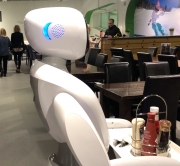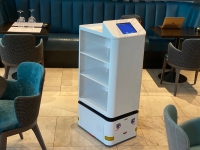Robotics And Primary Food handling.
The use of Robotics in food handling and packing tasks has previously seen a slow uptake compared to other applications. The reasons for this are varied and include a lack of flexibility to handle differing product types and small batch runs, high capital costs, lack of on -site skills and cleanliness of Robots and suitability.
Many food manufacturers face a continued shortage of staff within the food manufacturing Industry. The current situation involving staff shortages will not only continue but is set to rise considerably over the next decade. The adoption of Robots for food handling would be in the areas that perform primary handling and Packaging Tasks as this is where the majority of labor is deployed.
One of the major advancements of Robots within these areas is product consistency and conformity as Robots are incredibly precise. When Robot Automation is successfully deployed, ROI Return on investment can be very quick indeed. With advancements in technology continuing and Robot Costs slowly decreasing, this is certainly a bonus for food manufacturing Industries.
One of the other major concerns for food manufacturers is the reluctance to make the initial high capital investment due to short contract lengths which can be as a result of seasonal orders. The development of certain schemes such as Raas (Robots as a service) These schemes allow upfront costs to be financed and then spread over specific terms. This enables Food manufacturers to pay monthly costs avoiding the initial high capital investment.
Robots have certainly come of age in terms of suitability for primary food handling tasks and they continue to pose as an attractive solution for many food manufacturing Industries.



